Digital nudging in behaviour design
A case study of my graduation project for the research master Human-Computer Interaction, in collaboration with the PricewaterhouseCoopers Experience Center.
Introduction
Inclusive workplaces are more innovative, creative and profitable. The question in this project was: how do we connect employees who normally will not meet each other, in order to create a more inclusive workplace? Inclusion Insights is a social platform on which employees can match with other employees outside their bubble. By investigating and further developing the MVP, I was able to suggest effective digital nudges to increase impact of the app and improve user experience.
My role
This master thesis was an individual project, under supervision of Utrecht University and PwC. I lead my own research while collaborating with the product team at PwC, who built the Inclusion Insights MVP.
Problem
Inclusion is often invisible to those who enjoy it. The Inclusion Insights app aims to facilitate a platform that employees can use to create new, valuable connections. Simultaneously, management teams can monitor experiences that employees have through the app. In this project, these were the key challenges:
- Connecting employees who have contrasting needs on the same platform
- Investigating the effects of the current nudges on the user experience
- Improving the design of the app to increase engagement with the app
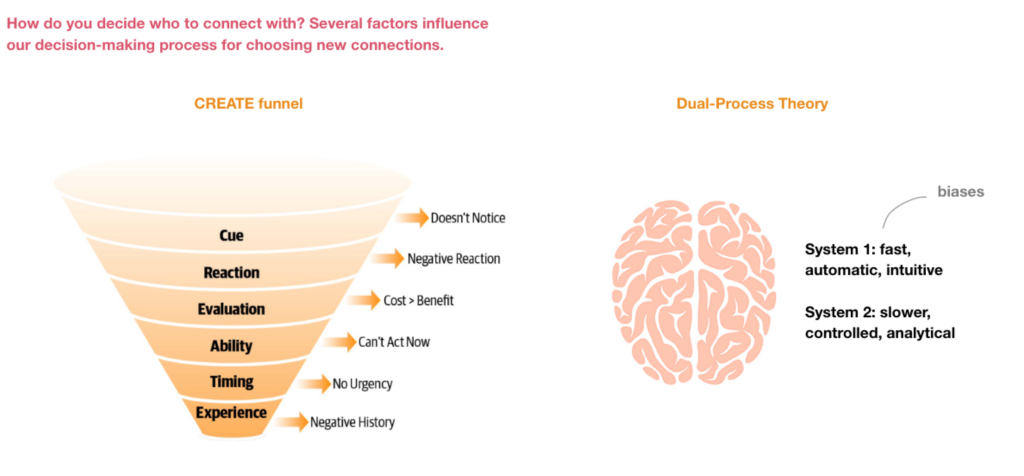
“How can we leverage the effect of behaviour design to make employees feel more valued?”
Goal
Investigate how digital nudges can increase adoption of an application that promotes inclusion, combining qualitative and quantitative methods.
Users
A group of employees with varying levels of work experience and feelings of inclusiveness, resulting in different needs that have to be met. This group was defined based on previously collected data by PwC and will be further validated in my own research.
Research setup
In order to explore the current knowledge on digital nudging and identify opportunities for promoting inclusive behaviour, a mixed-method approach was taken:
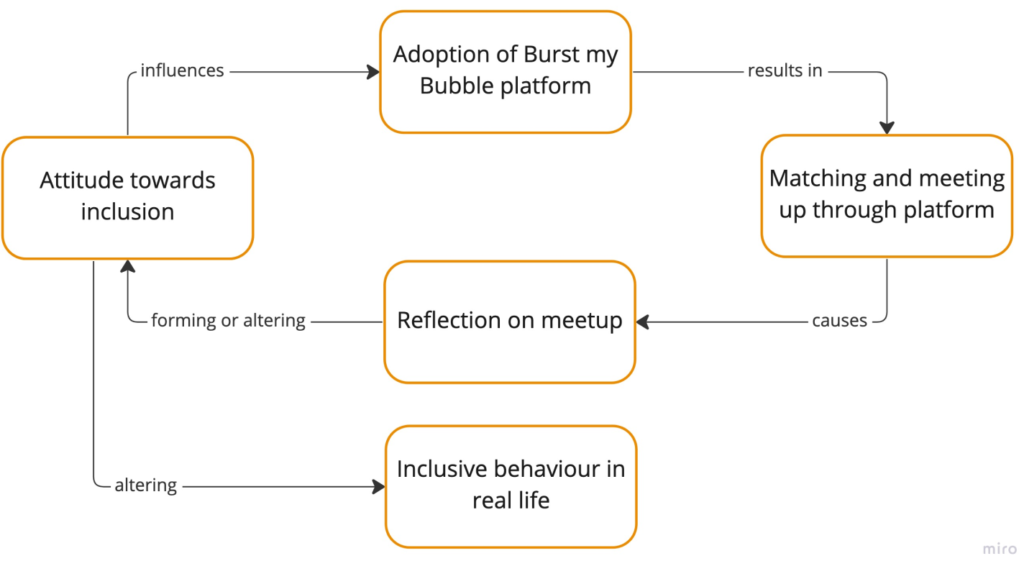
Literature research to gain understanding of how people connect and how technology can influence that decision-making.
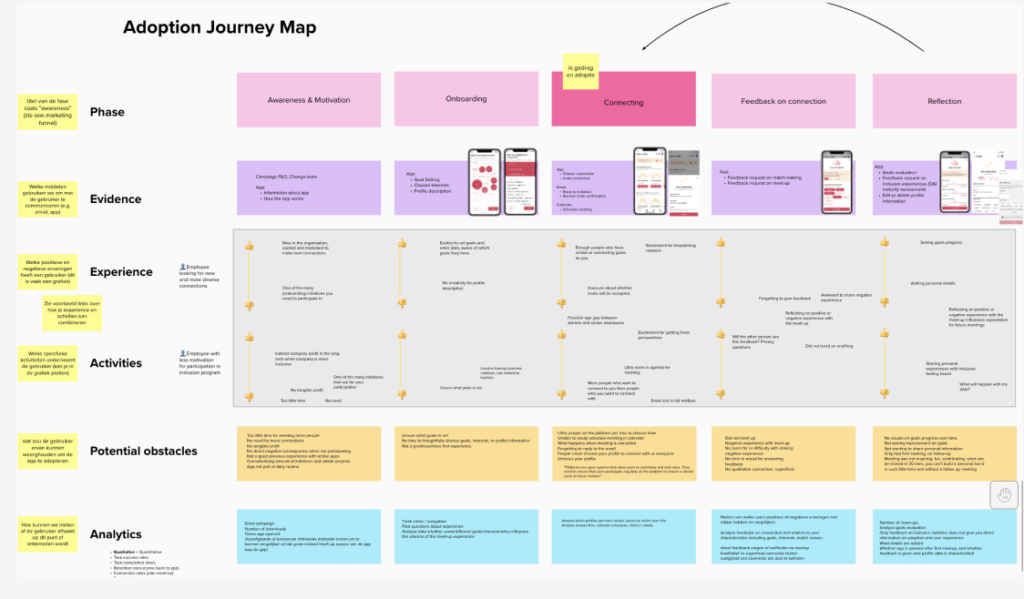
Journey mapping of the user flow within the MVP, to better understand how behaviour can be influenced within that flow.
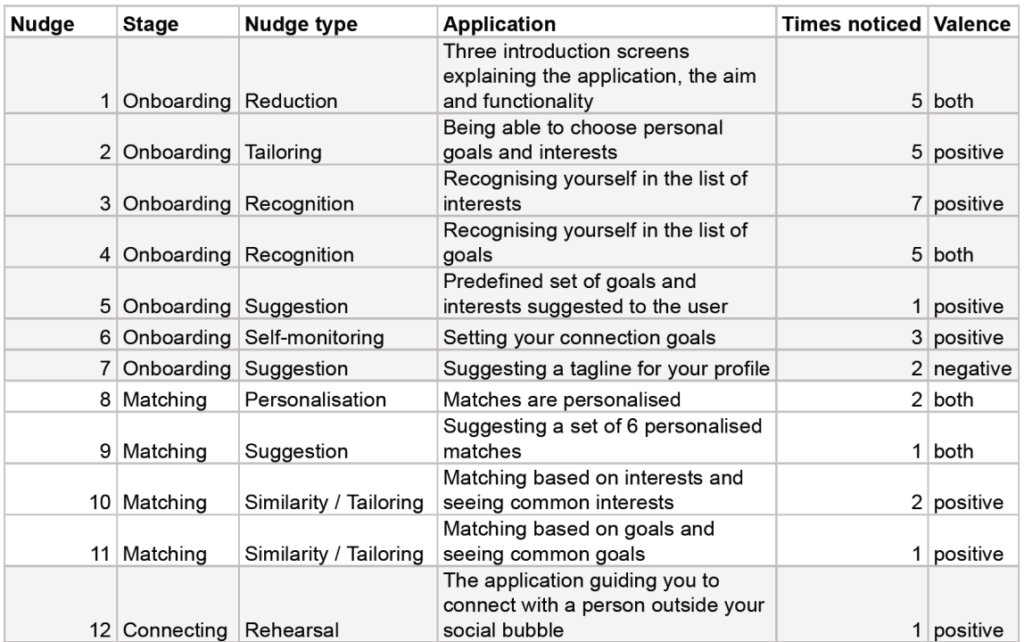
Think-aloud studies to assess how the app and its nudges were perceived. Users walked through the app and were asked to think out loud while doing so.
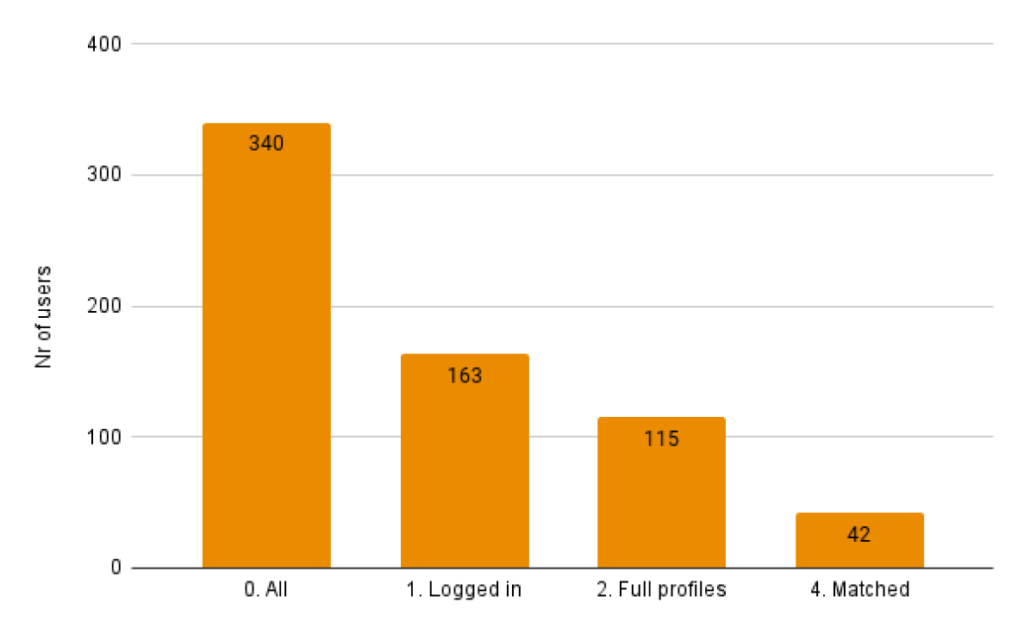
6-week pilot study to test the app in a team of 340 employees. All users got to create a profile and find a colleague to match and meet up with.
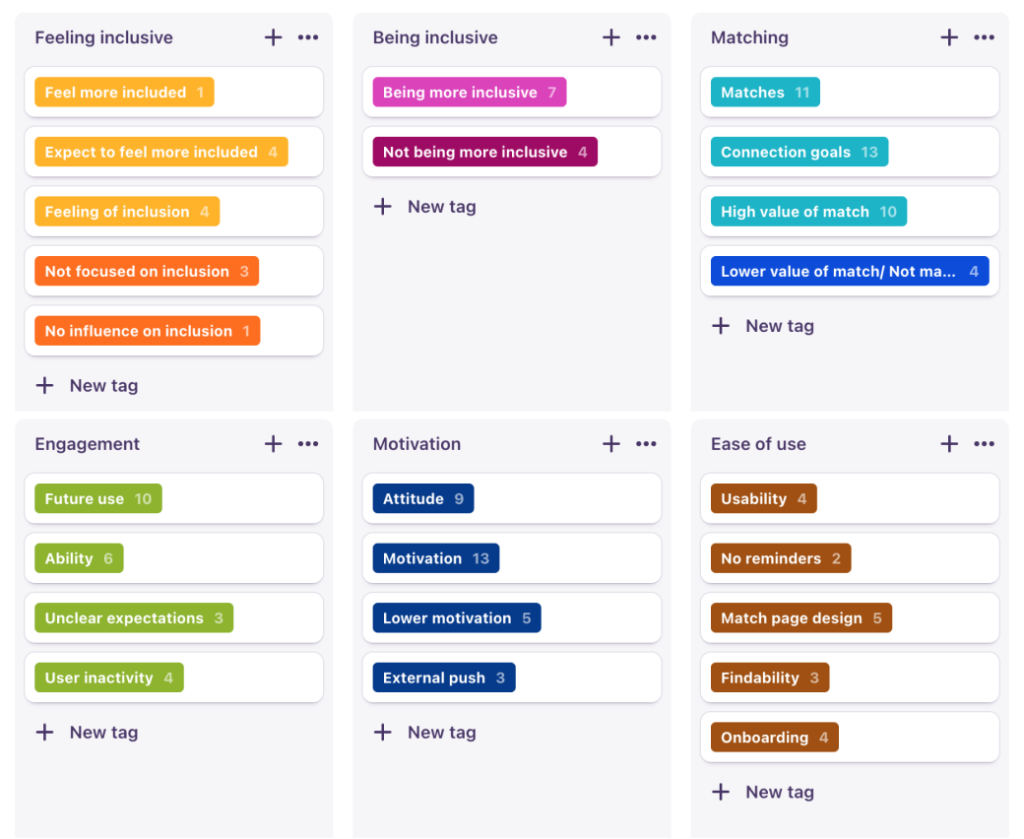
Interviews with pilot participants to discover deeper thoughts about inclusive behaviour as well as experiences with the app during the pilot.
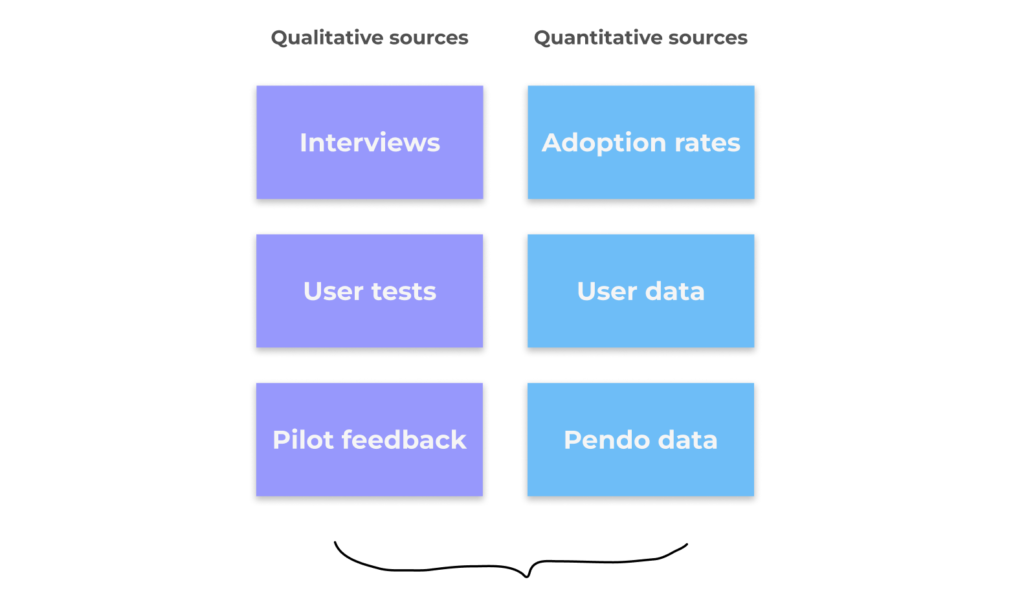
Data synthesis of six different input sources, all including relevant data to our evaluation of the MVP. This step was useful for cross-validating findings and learn from new perspectives.
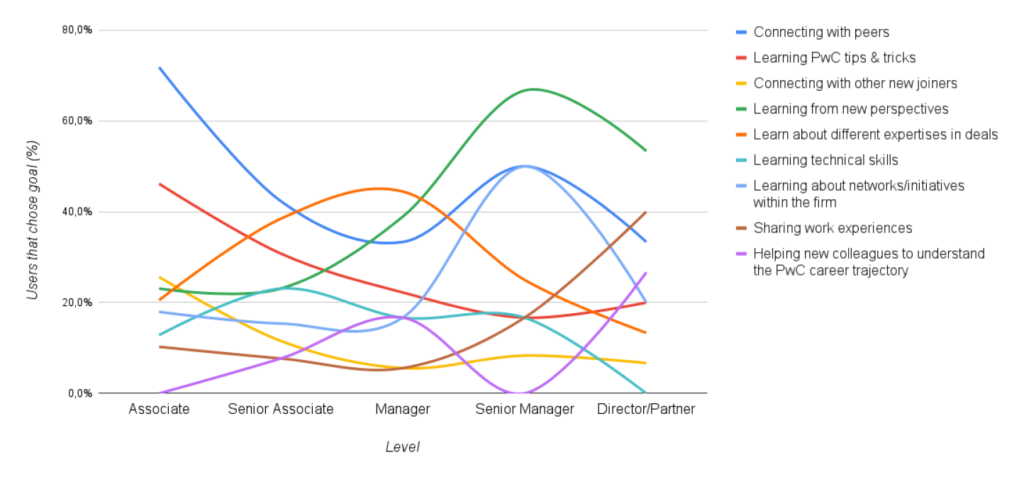
User data analysis to investigate types of users and patterns in behaviour.
Design approach
Our research showed differences in experience with inclusive behaviour. Depending on management level, years of work experience, gender, being part of a minority group or personal interests, participants had varying motivations for engaging with the platform.
These findings could be transferred into new strategies for increasing engagement with the platform. The design method followed was a combination of the Persuasive by Design method (Hermsen et al., 2016), Persuasive Systems Design (Oinas-Kukkonen and Harjumaa, 2009) and Behaviour Personas. This approach resulted in a novel and practical method for behaviour design. Below are the most important steps in that process:
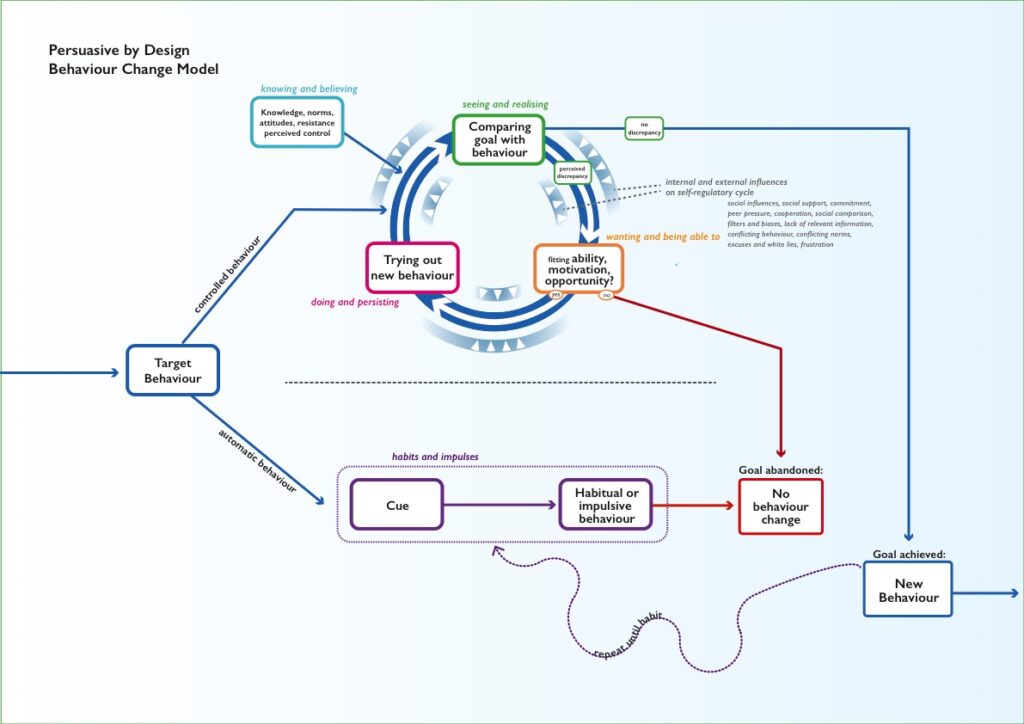
Persuasive by Design model, a practical model for designers who want scientific backing for their behaviour designs, with a complete overview of how behaviour develops (Hermsen et al., 2016).
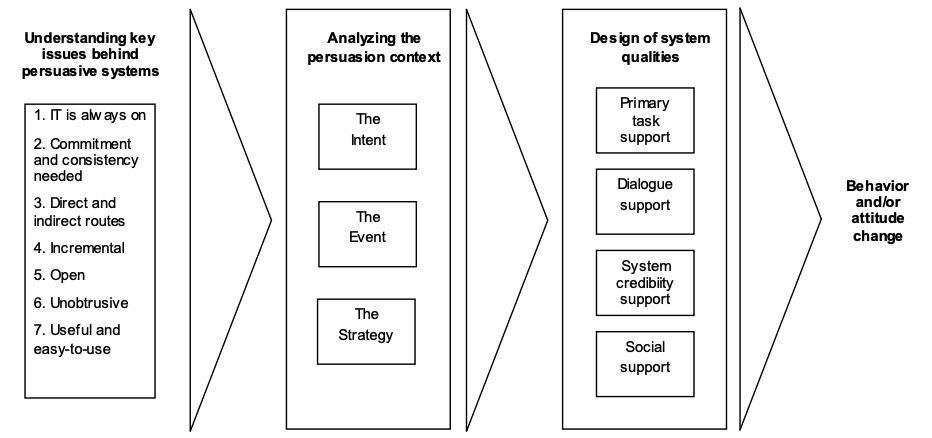
Persuasive Systems Design model, a validated, widely used system for designing persuasive systems (Oinas-Kukkonen and Harjumaa, 2009).
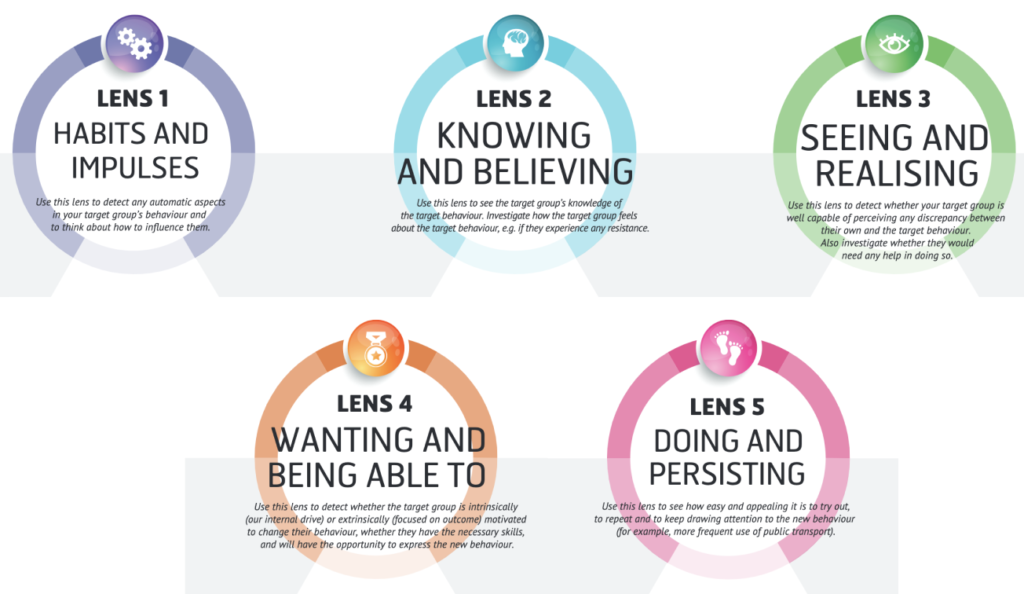
Behaviour Design Lenses to explore the five most important factors in behaviour (Hermsen et al., 2019).
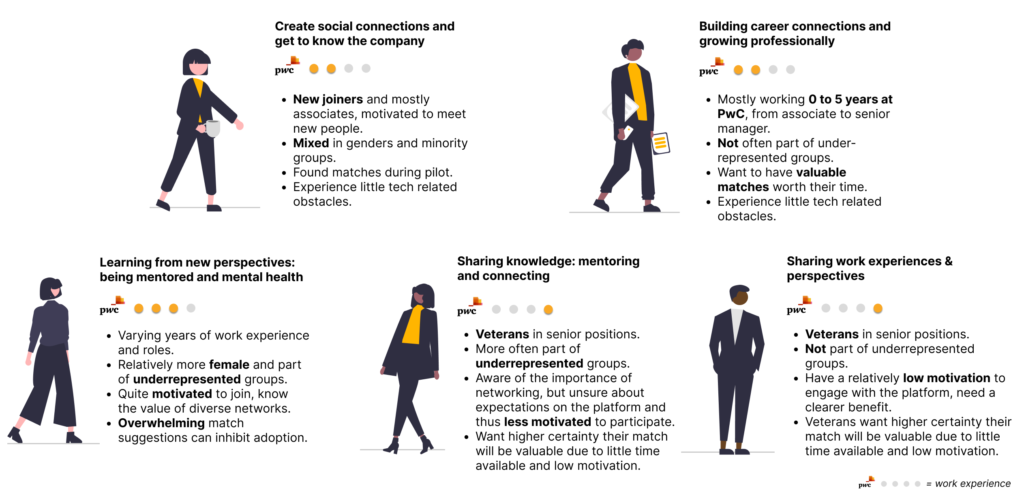
Creating user archetypes that describe the different types of users the platform targets. These archetypes help tailor designs to specific behaviours.
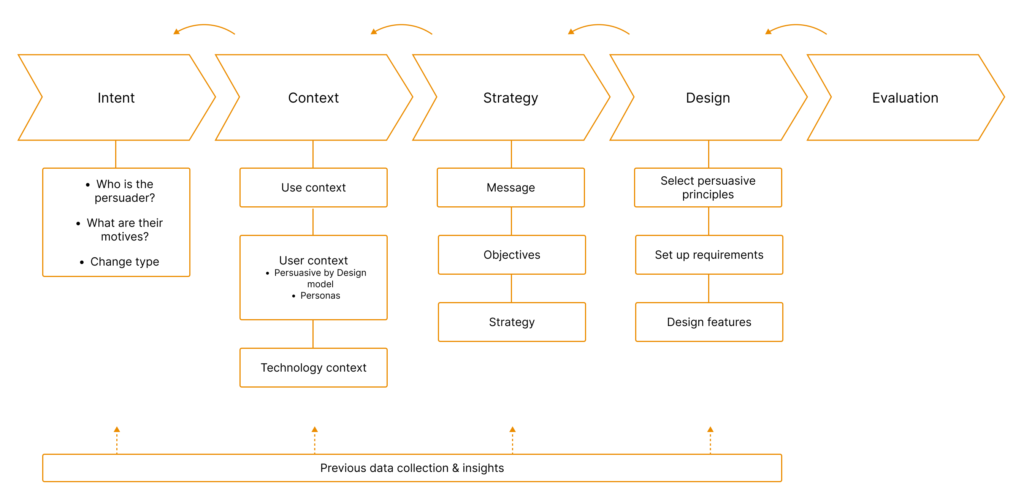
Novel Social Behaviour Design method, a combination of the models described above, tailored to designing for social behaviour change in a practical way.
Designing new nudges
As a result of the design process, a set of ten nudges was created that may improve engagement with the platform and stimulate inclusive behaviour. The results indicate a recommendation for leveraging the following nudges: reduction, tailoring, social influence, reminders, timing, social comparison, normative influence, self-monitoring, trust and liking. These nudges sketch a roadmap for future research into interventions that aim to improve inclusiveness within organisations.
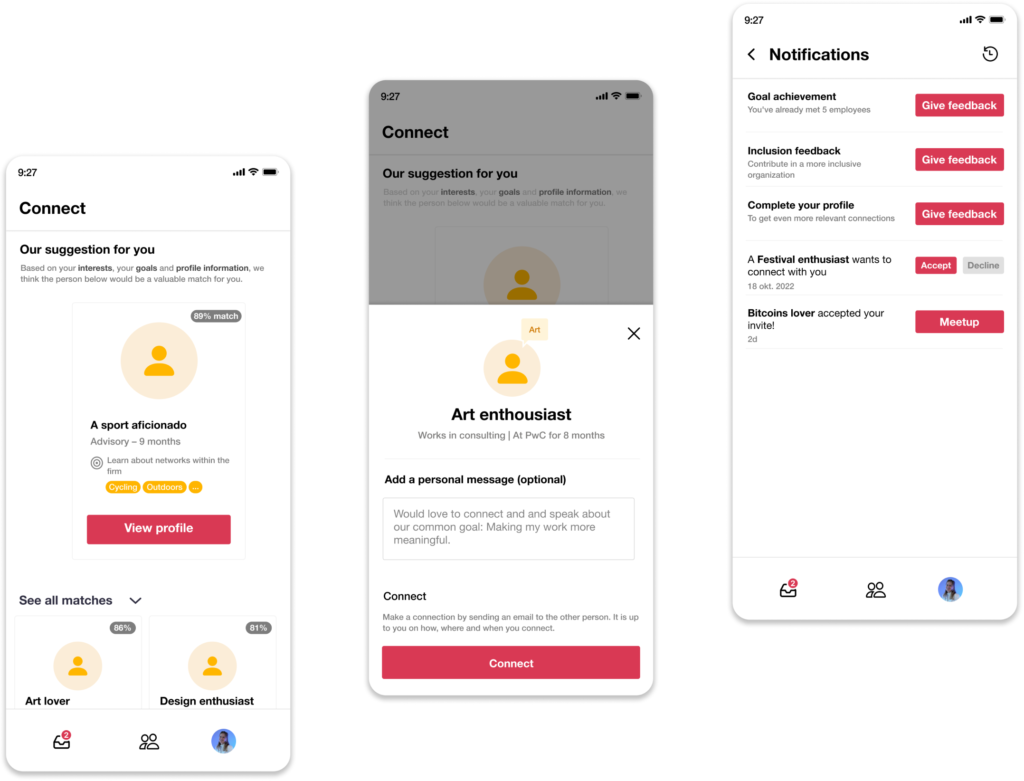
Outcomes
- Suggested a new behaviour design approach based on combining validated methods. The method provided the necessary detailed view on behavioural processes, while still intuitive and practical to use.
- Created new nudges for increased engagement with the platform. These were actionable insights for the product team to further grow the platform.
- Gained deeper understanding of designing digital nudges to influence user behaviour.
References
Sander Hermsen et al. “How I learned to appreciate our tame social scientist: experiences in
integrating design research and the behavioural sciences”. In: Proceedings of DRS2016: Design+
Research+ Society–Future-Focused Thinking 4 (2016), pp. 1375–1389.
Sander Hermsen et al. “From User Insights to Evidence-Based Strategy Selection. Designing for
Behaviour Change with the Behavioural Lenses Approach”. In: The Design Journal 22.sup1 (2019),
pp. 2179–2183.
Harri Oinas-Kukkonen and Marja Harjumaa. “Persuasive systems design: Key issues, process model,
and system features”. In: Communications of the association for Information Systems 24.1 (2009),
p. 28.
